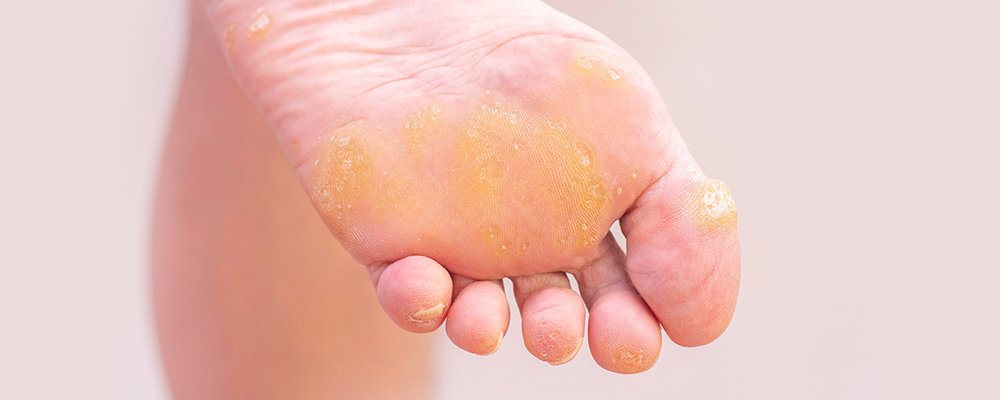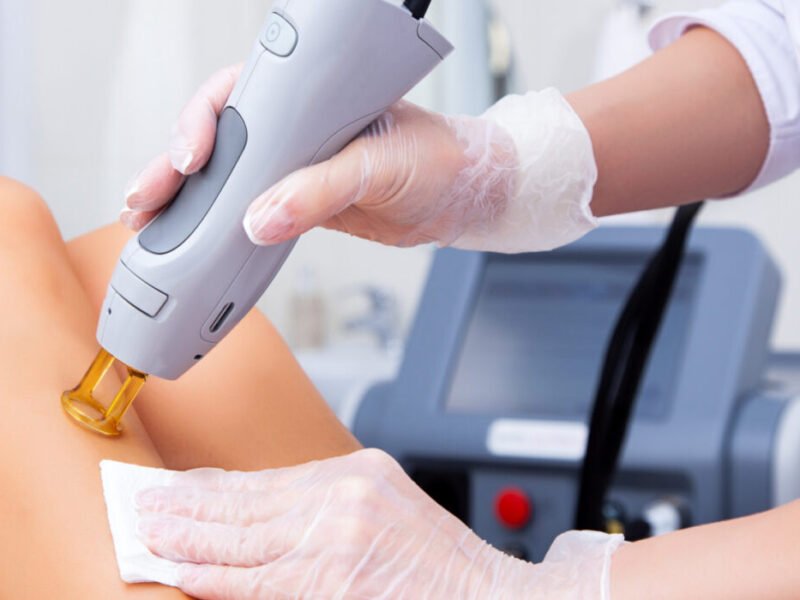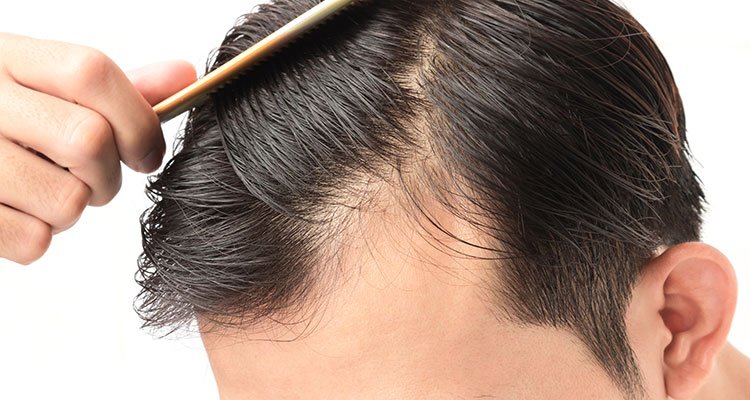Hyperkeratosis is a skin condition where the outer layer becomes thickened and hardened. This happens due to abnormal keratinisation, causing rough, dense patches or bumps to form on the skin.
General Information
Hyperkeratosis is a protective reaction of the stratified squamous epithelium (the upper layer of the skin). It mainly affects the skin but can also occur on mucous membranes, such as in the cervix, nasal cavity, or oesophagus, if those areas are lined with flat epithelium.
Depending on how widespread it is, hyperkeratosis may be:
-
Localised– limited to specific areas of the skin
-
Widespread– affecting large surface areas of the skin
It may appear on different parts of the body, including the armpits, feet, palms, cheeks, forehead, nose, knees, and more.
Types of Hyperkeratosis
-
Follicular – hair follicle openings become blocked with keratinised cells, forming tiny bumps that resemble goosebumps
-
Parafollicular – a deeper form where cells penetrate the lower layers of the skin, triggering inflammation
-
Actinic – a precancerous condition that appears on skin exposed to strong sunlight
-
Seborrhoeic – a benign skin growth, more common among older people
-
Plantar (foot) – caused by excessive pressure on the feet, often due to extra weight or flat feet
-
Warty – forms rough, lumpy growths on the skin
-
Subungual (under the nails) – thickened nails, often due to fungal infection
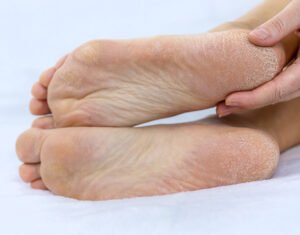
Symptoms
Key signs include:
-
small, dense bumps (2–3 mm)
-
hard, rough skin layers
-
sometimes itching or pain
-
thickened or hardened skin
-
in some cases, scarring
Actinic hyperkeratosis may progress in stages, beginning with pink patches and cracks, followed by peeling, and eventually forming painful, hardened lesions. This type is particularly concerning because it increases the risk of skin cancer.
Causes
Possible causes of hyperkeratosis include:
-
vitamin A deficiency
-
carbohydrate metabolism disorders
-
chronic liver or kidney diseases
-
hormonal changes during pregnancy
-
genetic predisposition
-
most importantly, excessive sun exposure,which is especially dangerous in actinic hyperkeratosis
When to See a Doctor
If you notice any of the symptoms mentioned above, you should consult a dermatologist.։ In some cases, other specialists may be involved, such as a gynaecologist if the affected area is the genital region.
A doctor will examine the skin, perform dermatoscopy (a detailed inspection), and may take a skin sample for laboratory analysis.
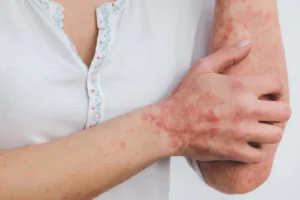
Treatment
Treatment depends on the type of hyperkeratosis.
Conservative methods:
-
vitamin A and E supplements
-
medications that regulate keratin production (such as retinoids)
-
anti-inflammatory drugs if there is inflammation
-
topical treatments like creams and ointments to soften and remove thickened skin
If a fungal infection is the cause,a complete antifungal treatment plan will be required, including medications and, in some cases, surgical cleaning of the affected nail.
Surgical methods:
-
laser therapy
-
removal of the affected skin layers using light-based technologies
In cases of actinic hyperkeratosis, the goal is to eliminate all lesions to prevent malignant transformation. The removed tissue is often sent for histological (cellular) examination.
Prevention and Recovery
To help prevent hyperkeratosis, it is important to:
-
protect your skin from the sun by using sunscreen
-
avoid prolonged sun exposure
-
practise good skincare and hygiene
Recovery care:
-
follow your doctor’s skincare instructions
-
avoid washing the affected area until it has fully healed
-
attend regular check-ups to monitor progress

Frequently Asked Questions
Which specialist treats hyperkeratosis?
A dermatologist. If the issue affects the genital area, a gynaecologist may also be involved.
Why is sun exposure dangerous?
Ultraviolet radiation damages the DNA of skin cells and interferes with natural repair mechanisms. This can lead to precancerous changes.
Can hyperkeratosis develop on the breasts?
Yes, especially in breastfeeding women. The most common cause is incorrect latching by the baby.
What does hyperkeratosis look like?
It may appear as small bumps, rough patches of skin, or thickened nails with altered shape and colour.
If you notice any of these symptoms, don’t delay seeing a specialist. At Da Vinci Clinic, we are ready to help restore your skin’s health with modern and personalised care.

